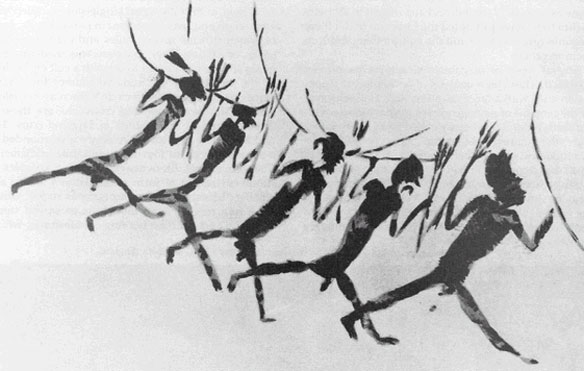
Marching Warriors, a rock painting at Cingle de la Mola, Remigia, Castellón, Spain (dated to about 7,000 to 4,000 BC). Photo source: ©© Jennifer Mei
The period between the last glaciation at the end of the Paleolithic (~12,000 years ago) and the beginning of the Neolithic (~7000 years ago), was, for the first three thousand years of what scholars recognize as the Mesolithic, a period of climatic instability characterized by rising sea levels and a need to adapt to a changing environment, by adaptation to a hunting, collecting, and fishing economy based on the use of forest, lakeside, and seashore environments.
Excerpts;
A prehistoric “Atlantis” in the North Sea may have been abandoned after being hit by a 5m tsunami 8,200 years ago.
The wave was generated by a catastrophic subsea landslide off the coast of Norway.
The research has been submitted to the journal Ocean Modelling and is being presented at the European Geosciences Union General Assembly in Vienna this week…
Searching for Doggerland, National Geographic
When signs of a lost world at the bottom of the North Sea first began to appear, no one wanted to believe them. The evidence started to surface a century and a half ago, when fishermen along the Dutch coast widely adopted a technique called beam trawling, dragging up traces of a vanished world in their nets. Now archaeologists are asking a timely question: What happens to people as their homeland disappears beneath a rising tide?








